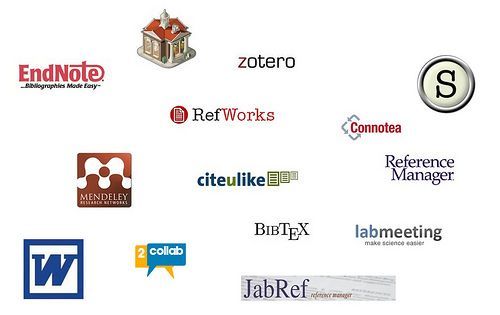Problem You want to distribute papers for a regular journal club in your department.Solution Create a group for your journal club in FriendFeed. You can create a either a private group, where only group member can read and post messages, or a public group that is open to everyone. Then invite all regular participants of your journal club to FriendFeed and make them join the group.
Front Matter

Regular readers of this blog know that I often talk about bibliographic management tools (most recently here and here), and it was probably for this reason that I was invited to an interesting full-day workshop last week at the Royal Free Hospital Medical Library in London: Bibliographic Management meets Web 2.0 . The event was organized by science librarians Frank Norman, Nathalie Cornee and Betsy Anagnostelis, and was attended
Last year Elsevier started the Article 2.0 Contest and asked for the best ideas on how research articles should be presented on the web. The winners were announced March 31: * Inigo Surguy from 67 Bricks won first prize. His application used enhanced content navigation and allowed adding semantic data to the article as well as commenting on specific parts of the article.
Google Wave is a new tool for communication and collaboration on the web. When Wave was first announced May 28 at the Google I/O conference, many people immediately saw its potential as a great collaboration tool for scientists:Ricardo Vidal: Using Google Wave to surf the streamsMe: Google Wave – don't forget the scientistsCameron Neylon: OMG! This changes EVERYTHING!
This weekend I was at SciFoo, an invitation-only unconference by O'Reilly Media , Nature and Google that took place at Google.

SciBarCamp Palo Alto took place July 8-9 in the Institute for the Future. I came right from the airport and arrived too late for the general introductions and session suggestions.

Problem You want to regularly go through the papers published in the most important journals in your research field. Solution Subscribe to the journal table of contents (TOC) RSS feed. Almost all journals now provide their TOC as RSS feed that is updated with every new issue. RSS is a standard web format used to publish frequently updated works.
The term digital divide usually describes the troubling gap between those who use computers and the Internet and those who do not (Wikipedia). Many if not most scientists are experienced users of computers and the internet, and use email or public databases such as PubMed on a daily basis.
I just returned from the American Society of Clinical Oncology (ASCO) meeting in Orlando, with approximately 30.000 participants one of the largest oncology conferences. Like other conferences of this size, the experience can be overwhelming, but thankfully the organizers are getting better every year in using technology that helps in finding the most interesting sessions.
Google Wave is a new tool to communicate online and collaborate and was announced today at the Google I/O conference. Google Wave is not only a product, but also an open protocol that anyone can use to build his own wave server.
Most of us find, store and sometimes read scientific papers electronically. Although abstracts and full-text papers are usually available as web pages in HTML format, PDF is clearly the preferred format for storing and printing papers. But publishing scientific papers in electronic form obviously requires more than providing the content in HTML or PDF format.